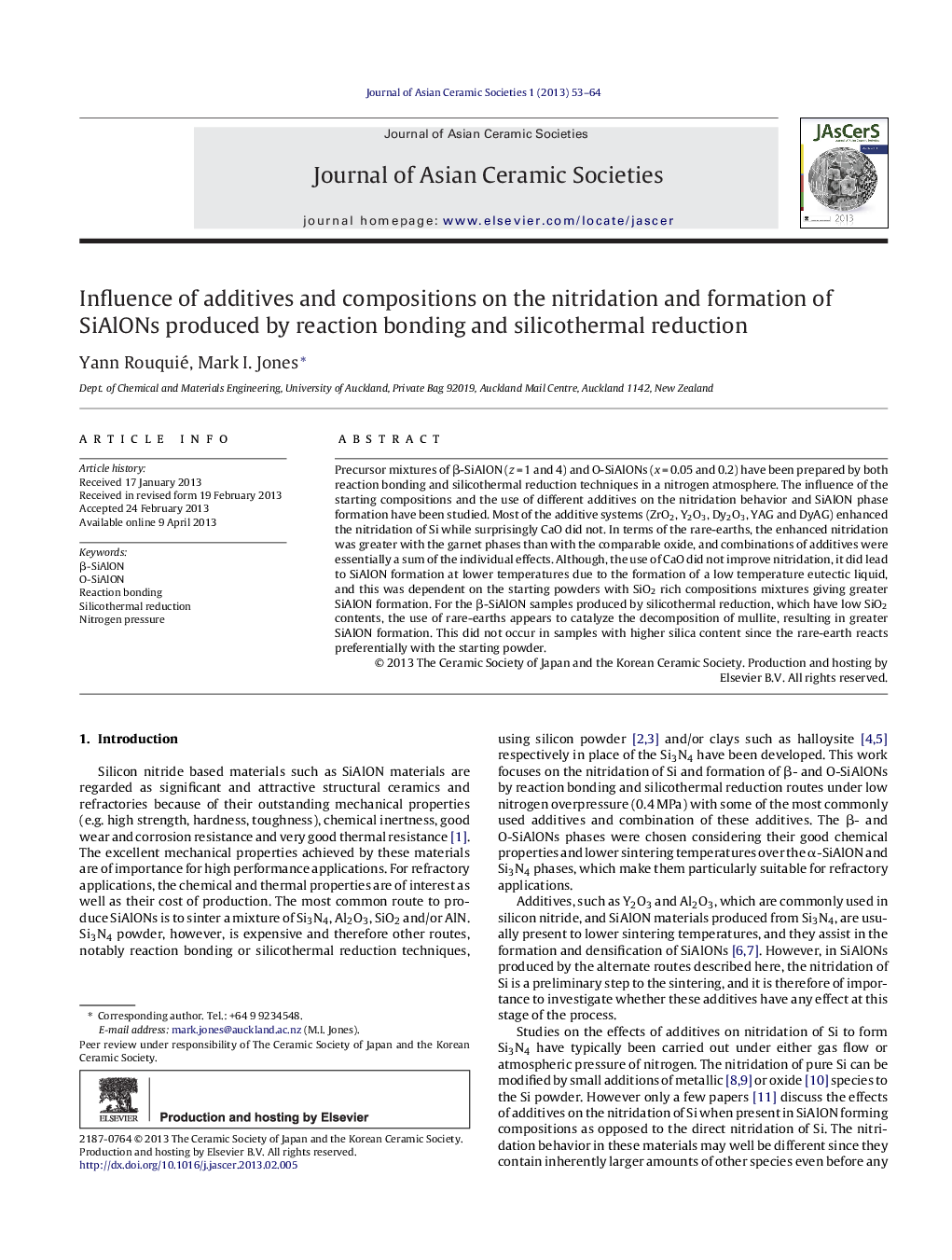| Article ID | Journal | Published Year | Pages | File Type |
|---|---|---|---|---|
| 1473223 | Journal of Asian Ceramic Societies | 2013 | 12 Pages |
•The nitridation of Si in was studied for SiAlON compositions with different additives.•Rare-earth oxides catalyzed decomposition of mullite in β-SiAlON prepared by silicothermal reduction.•ZrO2 and CaO had different effects on nitridation depending on the SiAlON composition.•Constant mass losses of Si during nitridation had a different influence on the degree of nitridation.
Precursor mixtures of β-SiAlON (z = 1 and 4) and O-SiAlONs (x = 0.05 and 0.2) have been prepared by both reaction bonding and silicothermal reduction techniques in a nitrogen atmosphere. The influence of the starting compositions and the use of different additives on the nitridation behavior and SiAlON phase formation have been studied. Most of the additive systems (ZrO2, Y2O3, Dy2O3, YAG and DyAG) enhanced the nitridation of Si while surprisingly CaO did not. In terms of the rare-earths, the enhanced nitridation was greater with the garnet phases than with the comparable oxide, and combinations of additives were essentially a sum of the individual effects. Although, the use of CaO did not improve nitridation, it did lead to SiAlON formation at lower temperatures due to the formation of a low temperature eutectic liquid, and this was dependent on the starting powders with SiO2 rich compositions mixtures giving greater SiAlON formation. For the β-SiAlON samples produced by silicothermal reduction, which have low SiO2 contents, the use of rare-earths appears to catalyze the decomposition of mullite, resulting in greater SiAlON formation. This did not occur in samples with higher silica content since the rare-earth reacts preferentially with the starting powder.
